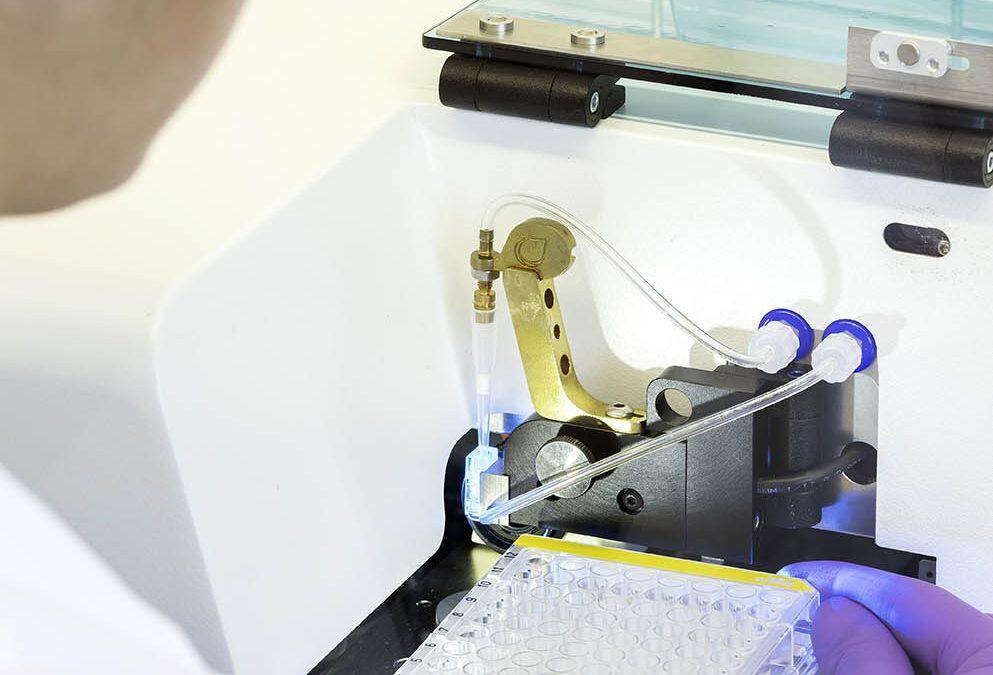Why Cell Line Development Is Essential for Biologics Manufacturing
Cell line development is one of the most critical stages in the creation of biologics such as monoclonal antibodies, recombinant proteins, and other complex therapeutic molecules. A robust, well-characterized cell line is the foundation for reliable and scalable GMP manufacturing, directly influencing product quality, yield, and regulatory success.
For biotech and biopharma companies preparing for IND-enabling studies or clinical manufacturing, understanding the cell line development process is essential. Each step must be carefully planned and executed to avoid costly delays and ensure compliance. Working with an experienced CDMO partner can significantly reduce risk and accelerate timelines.
Step 1: Vector Design & Clone Generation
What Is Cell Line Development and Why It Matters
At its core, cell line development is the process of engineering a host cell to stably express a therapeutic protein. The first step involves designing and constructing the expression vector — the DNA blueprint that enables production of the desired molecule.
Choosing the Right Expression System: CHO Cells in Biopharma
Chinese Hamster Ovary (CHO) cells are the gold standard in biopharma cell line development, particularly for monoclonal antibody production. Their ability to grow in suspension, adapt to serum-free media, and perform human-like post-translational modifications makes them the preferred CHO expression system.
Key decisions in this phase include:
◼ Promoter selection to achieve strong, consistent expression.
◼ Transfection method (chemical, electroporation, or viral) adapted to the cell type.
◼ Selection markers (e.g., DHFR, GS) that allow for isolation of high-producing clones.
This stage results in a diverse pool of clones — each with different expression profiles — forming the foundation for the next step.
Step 2: Clone Screening & Selection
Criteria for Selecting High-Performing Clones
Once clones are generated, they must be thoroughly screened to identify the best performers. This stage is crucial for optimizing productivity, growth characteristics, and product quality.
Key evaluation criteria include:
◼ Productivity: Sufficient titer levels to support clinical and commercial production.
◼ Growth performance: Stable doubling times and robust growth in suspension cultures
◼ Product quality: Correct glycosylation, low aggregation, and other critical quality attributes (CQAs).
Advanced technologies, such as automated high-throughput screening, are often used to accelerate this part of the cell line development workflow, increasing the likelihood of identifying an ideal candidate for further development.
Step 3: Clone Characterization & Stability Assessment
Ensuring a Stable CHO Cell Line for GMP Manufacturing
After initial screening, the top clones undergo detailed characterization to confirm their suitability for GMP manufacturing. This step ensures that the cell line is both productive and stable over time — essential for regulatory submissions and long-term manufacturing success.
Typical analyses include:
◼ Genetic stability testing: Confirming the integrity of the integrated transgene across multiple passages.
◼ Expression consistency: Monitoring protein expression levels under different culture conditions.
◼ Product quality assessment: Verifying reproducibility of key quality attributes.
A stable CHO cell line is the backbone of a successful biologics program. Without rigorous characterization, unexpected shifts in expression or quality could compromise clinical results or regulatory approval.
Step 4: Master and Working Cell Bank Creation
Best Practices for GMP-Compliant Cell Banking
Once a final clone is selected, it must be preserved and standardized to ensure consistent supply throughout the product’s lifecycle. This is achieved through the creation of a Master Cell Bank (MCB) and a Working Cell Bank (WCB) — a critical milestone in any cell line development protocol.
Best practices include:
◼ Controlled cryopreservation: Ensuring high post-thaw viability and consistent performance.
◼ Comprehensive quality control: Including sterility, mycoplasma, adventitious virus testing, and identity verification.
◼ Robust documentation: Maintaining traceability and compliance with GMP regulatory expectations.
These cell banks form the official source of production material, guaranteeing reproducibility and regulatory alignment across all future manufacturing campaigns.
Step 5: Tech Transfer & Upstream Process Optimization
Scaling a CHO Expression System to Commercial Manufacturing
The final step in the cell line development workflow is transferring the selected cell line into process development and, eventually, GMP manufacturing. The objective is to optimize conditions for scalability, yield, and consistent product quality.
Activities typically include:
◼ Upstream process optimization: Refining media composition, feeding strategies, and bioreactor parameters to maximize productivity.
◼ Scale-up studies: Ensuring a smooth transition from bench-scale to pilot and commercial manufacturing volumes.
◼ Detailed tech transfer documentation: Capturing all process parameters and critical control points to ensure reproducibility.
This phase bridges early research with full-scale production. A well-executed transfer ensures that the CHO cell line performs reliably in large-scale bioreactors and can support clinical and commercial supply needs.
Conclusion
A robust and well-planned cell line development process is essential for successful biologics manufacturing. Each step — from vector design and clone selection to GMP banking and process optimization — plays a crucial role in ensuring product quality, regulatory compliance, and commercial viability.
Working with a trusted CDMO partner helps navigate the complexities of biopharma cell line development and accelerates the path from discovery to clinical supply.
At Olon, we combine decades of experience in biologics manufacturing with advanced cell line development services to support biotech and pharma companies from early development through GMP production.
To learn more about how Olon can support your cell line development strategy, explore our services and discover how we help bring biopharma innovations to life.



